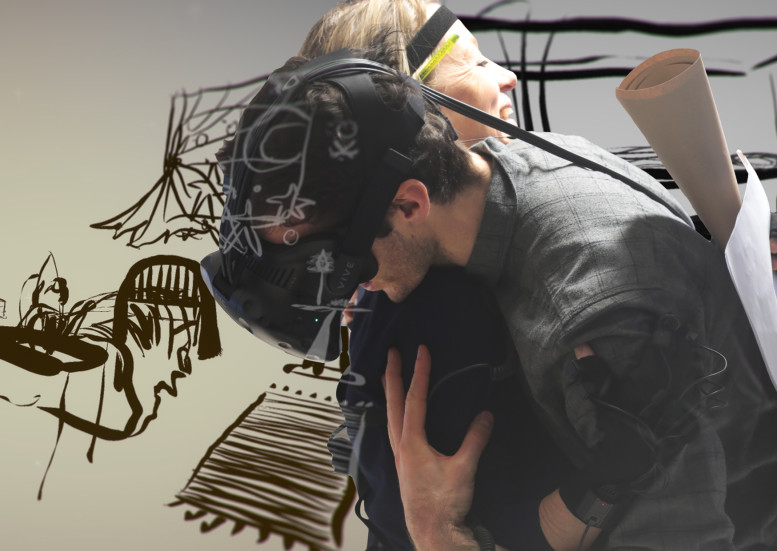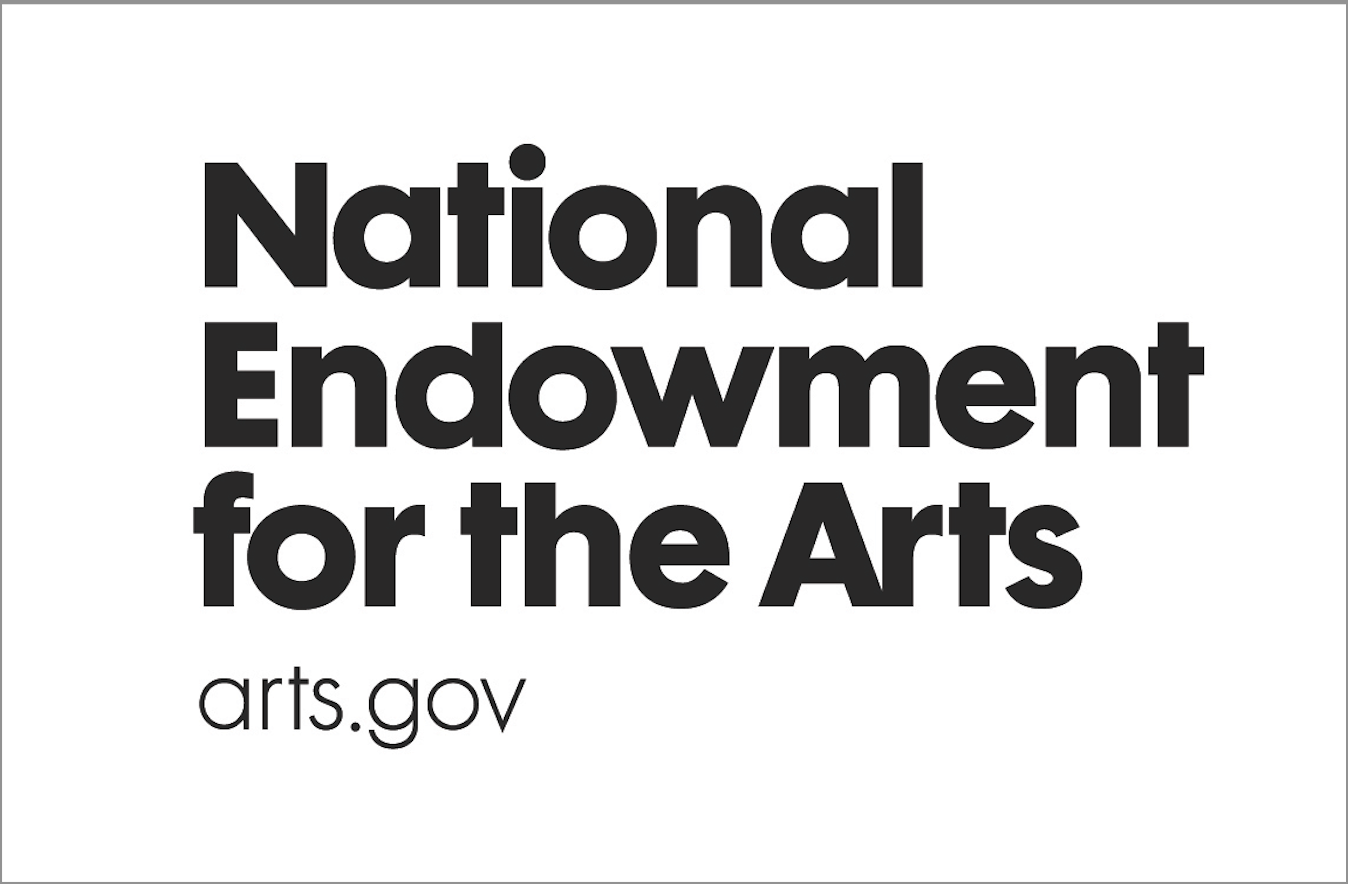Increasingly, virtual reality experiences are attempting to meld the physical and the virtual. The Void goes the gaming route, putting users a physical maze. Users navigate the space while wearing a VR headset, motion sensors, and a haptic feedback vest.
Similarly, the new installation “Draw Me Close” from Canadian playwright and director Jordan Tannahill, with support from the National Theatre (NT) and National Film Board of Canada (NFB), offers a physical environment that connects with the story in the HTC Vive headset.
But unlike other VR experiences trying to meld physical and digital, “Draw Me Close” offers a live actor who plays the author’s mother. You step into an illustrative representation of Tannahill’s boyhood home and relive a moment from his childhood. You hold mom’s hand as she guides you through the shag-carpeted house you feel beneath your bare feet. His mother fights cancer and an abusive husband.
The virtual world manifests from beautifully simple illustrations by at Eva Harrison, who brings her personal experience living with stage four cancer.
The team utilizes a unique motion capture system, Orion, currently being developed by Ikinema. It facilitates the synchronization between the real objects in the room and the audience’s virtual experience, including a moment in which you color with a virtual “marker.”
Part of a new incubating collaboration between organizations separated by the Atlantic, their goal is to use theater and new digital tools to inform the next evolution of storytelling. They selected four theater-makers, two from the UK and two from Canada. The first week of the lab at National Film Board of Canada focused on different viewpoints of immersive storytelling. They introduced the makers to tools of virtual reality and the creative technologists so they could think critically about the medium. Then the makers went through a round of ideation on a topic they’d been considering prior to the lab. They focused on making and prototyping the second week.
After a three-week lab in late 2016, Tannihill’s “Draw Me Close” emerged as a project ready for public consumption. This week, the first part of a larger piece debuted at Tribeca Film Festival’s Storyscapes competition.
“NFB is an innovative organization and technology has been part of theater for centuries now,” said Toby Coffey, National Theatre’s Head of Digital Development. “So in that mix, it means we’re always looking at how image and technologies relate to the craft of theatrical storytelling. Obviously, within the past two years, it’s really come into its own within things like VR and 360. Those were very significant technological developments that had very strong implications for storytelling, which is why we set up the studio.”
Three years ago, Rufus Norris took the National Theatre’s artistic reigns. A year later, it installed Lisa Burger as executive director, which set the stage for this immersive, digital shift. Like so many artistic choices, it came from experiencing an “ah ha!” moment.
“I put a Google Cardboard on our artistic director’s head,” Coffey explained, “showed him a 360 film, he was like, ‘Holy shit we’ve got to do something with this. This is really important storytelling.’ And that set the landscape to go out and develop.”
Coffey explains that while the National Theatre is still dedicated to producing Shakespeare and pre-existing works, they are doing more new work than ever before.
“It’s Rufus’ take that we get creatives to make new work knowing that these technologies exist,” said Coffey. “So we don’t go to an artist and say, ‘Make us a bit of VR.’ What we do is socialize the artist with all the different forms of technology, and then say, ‘Do you want to work with any of these? Do any of these bring more storytelling capabilities than you previously had?’ Then, we start working toward making an immersive piece.”
Most participants are eager to work with the new technology, but some are slower to adopt. More importantly, Coffey suggests, is how the lab is informing theater creation on the actual boards.
“The headspace that experiments with these technologies has actually given them a different creative vision than they’ve had before,” said Coffey, “which in itself is a great thing as well.”
Like the nascent technology with which they play, the National Theater and NFB are still discovering what the program could be. It could be a two-year project where the first year is about identifying artists and prototyping, and the second year might focus on taking them to market or further development. Currently, National Theatre has a suite of writers in its Immersive Storytelling Studio, incubating about 15 projects.
“What we are doing is taking the skill, the expertise, the romance of theater and seeing what it means for the future of storytelling with these emerging technologies. You won’t necessarily say, ‘Oh, that’s a piece of theater.’ What you will be able to say is, ‘That has been informed by theater.'”
Post Views:
1,208


